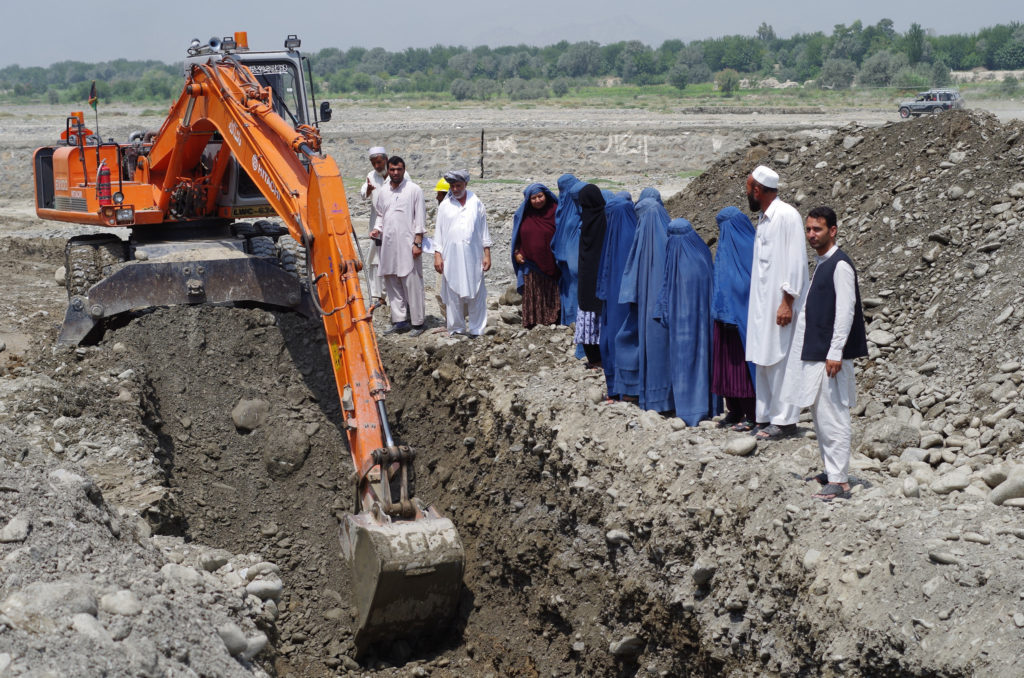 As Afghanistan continues to address the negative effects of decades of conflict, recovery efforts are rebuilding and strengthening the country’s infrastructure. Ongoing conflicts have left many of Afghanistan’s rural residents without accessible, clean water, and irrigation systems have been decimated by bombing and shelling. Afghanistan’s mountainous terrain has sustained damage from war and weather, which have both contributed to the need for new roads and bridges to open trade and transportation routes.
As Afghanistan continues to address the negative effects of decades of conflict, recovery efforts are rebuilding and strengthening the country’s infrastructure. Ongoing conflicts have left many of Afghanistan’s rural residents without accessible, clean water, and irrigation systems have been decimated by bombing and shelling. Afghanistan’s mountainous terrain has sustained damage from war and weather, which have both contributed to the need for new roads and bridges to open trade and transportation routes.
The country is also experiencing a lack of medical facilities, classrooms, and electricity and potable water are frequently scarce. All of these factors have hampered residents’ abilities to obtain basic education and health care and have made daily tasks such as cooking and cleaning difficult.
In 2006, the U.S. Agency for International Development (USAID) began partnering with Afghanistan and other agencies and governments to build infrastructure, encourage economic recovery, and foster political stability. In the 11 years since, USAID programs have built roads, dams, and a growing local workforce that are having a positive effect on the country’s population.
USAID projects have increased access to electricity and water, opened schools and hospitals, and supported the Afghan government’s vision for attracting international investment and providing more residents with access to basic utilities and government services. Here are some of USAID’s projects in Afghanistan.
Building Projects
With USAID’s support, hundreds of hospitals, schools, government buildings, training centers, and clinics have been built in Afghanistan. Projects include a 20-bed hospital in Paktika Province that was completed in February 2016; designs for a 50-bed hospital in Samangan province and a 100-bed hospital in Ghazni province; and the refurbishment of Antany Hospital in Kabul.
Roads
USAID has helped build or repair more than 2,000 kilometers of roads in Afghanistan, including the Ring Road connecting the cities of Kabul, Herat, Kandahar City, Jalalabad, and Mazer-e-Sharif. These transportation corridors open opportunities for travel and commerce, especially now that more than 80 percent of Afghan people live within 50 kilometers of the Ring Road. While natural disasters and continuing conflicts still damage roads, USAID provides emergency repairs to keep routes open. Projects include:
Kishem to Faizabad National Highway:
Completed in 2011, this 103-kilometer road is a component of the government’s plan to build a two-lane highway that extends to the Afghanistan-China border. Prior to construction, this former Silk Road route was a dirt road with poor drainage that had been damaged by floods, snow, and mudslides. Since the road’s completion, an evaluation showed a significant increase in new businesses along the route as well as increased bus passenger activity.
District Center Roads (DCR) program:
This program builds roads that connect provincial capitals as well as constructing roads between remote areas and markets and government centers. At least 240 kilometers of roads have been built, increasing trade, giving farming communities better routes to markets, and providing people with access to government and social services.
Gardez to Khost Road reconstruction:
This 101-kilometer, all-weather, paved road runs from the center of Gardez to Khost, a city in eastern Afghanistan. Reconstruction work included replacing or repairing drainage infrastructure and bridges as well as improving gravel and damaged road surfaces caused by, among other factors, heavy truck traffic. The corridor has opened cross-border trade for businesses and residents along the route.
Water and Sanitation
Getting clean water to rural and urban residents in Afghanistan has been a significant challenge. USAID has built more than 3,000 wells, mostly in rural areas, and constructed 2,000 latrines to improve sanitation and stop diseases from spreading. In Kabul, USAID is helping to improve the city’s water infrastructure and train water and sanitation workers. Projects include:
Kabul Urban Water Supply:
USAID has provided $20 million in funding for a phase of this project, which is installing a system to provide drinking water to 135,000 people who live in Kabul. The system includes a pumping station, new wells, water transmission pipes, and a water storage reservoir for drinking water. Officials believe the system will increase people’s health and livelihoods by providing potable water 24 hours a day.
Rural Water, Sanitation, and Hygiene:
This program, which provides safe drinking water and promotes good hygiene practices, is expected to impact more than half a million Afghans who live in 16 rural provinces. The project is helping communities maintain new wells and water pipes, supporting health workers as they improve hygiene in health facilities, and teaching local groups about good hygiene.
Along with improving access to potable water, this project also should help private groups operate and maintain rural water systems that serve about 1,000 communities, replace traditional handpumps with low-maintenance solar pumps, and provide safe drinking water for primary schools and community learning centers.


